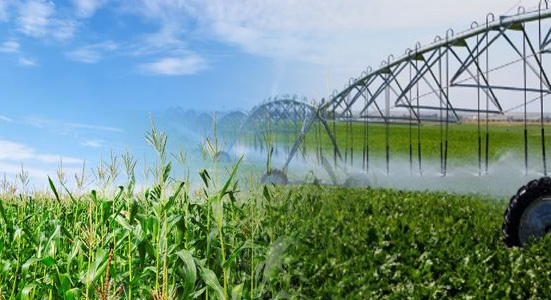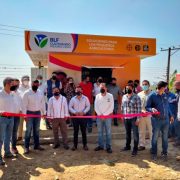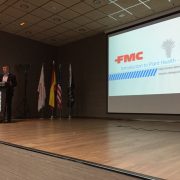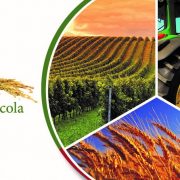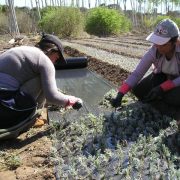Special Riego: “without water there are no irrigation, and without irrigation there is no food”
By J.S.Soler.
We are currently experiencing the worst drought in Spain in the last 20 years. It is undoubtedly a cyclical issue in which farmers in many areas face the next irrigation season without having guaranteed water for their crops. Ministry and communities of irrigators work to minimize the water deficit, as well as the companies of the sector develop and innovate to make irrigation more and more efficient.
The importance of irrigation in the economy is not only relevant from a macroeconomic point of view (creation of jobs, transport, agri-food industry, fertilizers, packaging, machinery, etc.), but also from a microeconomic perspective. Thus, irrigation has allowed many farmers to improve their performance, competitiveness and quality of life.
One hectare of irrigated land produces between five and six times more than one hectare of rainfed land and generates an income four times higher, according to data from the National Federation of Irrigation Communities of Spain (Fenacore)
Irrigation is important for the economic development of its environment of influence, due to the increase in GDP generated by the agri-food complex associated with irrigation. Irrigation accounts for about 60% of the Final Agricultural Production of Spain. Currently, according to the National Irrigation Plan, the number of irrigated farms in Spain exceeds one million, with an area under irrigation of some 3.6 million hectares, which account for just over 15% of the useful agricultural area (SAU) and around 7% of the total Spanish area.
But it also has advantages for the environment, since it acts as a sink for atmospheric CO2. In Europe, this biomass absorbs around 12% of the CO2 that industries emit. As an example, in Spain the cultivation of winter cereals is a sink that absorbs around 20 million tons of CO2 each year. In addition, its importance in the distribution of the population in rural areas, the production of biofuels, the reduction of soil erosion and desertification, as well as its contribution to the conservation of deltas and wetlands must be highlighted.
Data are still available about irrigation that do not agree with reality. More than twenty years ago, around 80% of the demand for water in our country was for agriculture. But studies carried out recently by the Ministry of Agriculture affirm that the agrarian demand decreases, could be 63%, while the supply to populations and ecological uses increases.
This drop in water consumption in the agricultural sector is explained by the crisis in general, but also by the profound process of modernization of irrigation that farmers have carried out in recent years, with the transformation of irrigation systems by gravity to the new mechanisms of irrigation by pressure (spraying, dripping, etc.)
The new irrigation mechanisms allow dosing of resources instead of flooding plots as traditional systems do by gravity, which allows water savings of close to 25%. In fact, Spain is the world leader in saving water for agricultural use, as it is an international benchmark in modernized irrigation. Localized irrigation (drip) systems already reach 50% of the irrigated area, with less than one million hectares using surface irrigation systems. Approximately, in these last fifteen years, drip irrigation -with lower water consumption and greater energy demand- has passed, in general terms, from 17% to 49% of the irrigation surface.
What are the challenges for irrigators? In the first place, to achieve a fair electric bill and hence to propose a real reform of the electricity system that distributes the fixed costs in a transparent and equitable way to avoid the asphyxia of the irrigation that has a seasonal consumption. In recent years the rise of electricity in irrigation is 100%
Another of the main challenges is to achieve a National Water Pact that ensures a fully stable water horizon, a long-term hydrological policy that allows the State to strengthen its constitutional powers over the public hydraulic domain. Irrigators also call attention to the need to give continuity to irrigation support policies. Another commitment is to curb the effects of climate change and for this they insist on the sustainable construction of regulatory works where necessary as the best solution to alleviate the adverse effects of climate change. Structural measures such as the execution of reservoirs must be put in place to avoid, on the one hand, the damages produced by the torrential rains and, on the other, to have guaranteed water to be able to irrigate in periods of drought.
Urgent measures
The Ministry of Agriculture is currently working on a draft law on urgent measures against drought for holders of farms located in the most affected river basin districts, and which is currently in the process of being processed in the Senate. It is important to mitigate the water deficit and compensate farmers against the losses caused by the drought, but it is still a one-time patch because we are talking about tax exemptions, postponements of Social Security payments, aid through a fund. o preferential credit lines or water supply through non-usual resources (drought wells, temporary transfer of rights, salinized water).
Also the irrigators, through Fenacore – National Federation of Communities of Irrigators of Spain – try to plan the next irrigation campaign and thus minimize the economic damages inherent to the scarcity of water. Thus, they have activated an action protocol to enable each entity or group of irrigators to decide on the implementation of their own drought management plan.
In each plan, the necessary measures must be contemplated to deal with the situation of lack of rains and shortage of available flows in advance. As an example of the latter, the water stored in February in Spain was only at 41.88% capacity, 50% a year ago or 62%, which is the average of the last decade. The most alarming situation occurs in the Mediterranean region: the Segura basin with only 13% of water reservoirs or the Júcar basin with 25%. Also worrying is the Andalusian Mediterranean with 31% or the Guadalquivir with 33%. More towards the center the Tagus is only at 39% of its capacity and the Douro at 36%.
Said own plans should be discussed and approved in a normal situation to guarantee the objectivity of the measures and avoid the conflicts that are generated in the absence of resources. Its availability will allow, in cases of scarcity, to fix the equitable distribution of the endowments, so that the farmers know orientatively with what water they are going to count and to know in advance what they can or can not plant.
The distribution of water will not only be based on objective criteria such as the type of crop or the irrigation system used, but also on the experience acquired over the years in similar situations. Thus, the historical information of each community of irrigators on consumption will become a basic indicator to set the scale of priorities. For example, in extreme situations, it will be possible to choose to guarantee the survival of tree plantations over the irrigation of vegetables that have not yet been planted.
The communities of irrigators with modernized irrigation systems have an advantage, since having technological tools to control consumption will allow them to make decisions in real time and adjust their water reserves to the millimeter, instead of the more traditional option of limiting themselves to reduce the endowment and space the risks.
News
What are the main novelties of some of these leading companies in the sector related to irrigation?
REGABER
Regaber, pioneer company in innovative irrigation systems during the last four decades, contemplates for 2018 to continue working on irrigation systems increasingly efficient, ultralow flow and minimum pressure. These systems allow the farmer to obtain savings in energy expenditure, as well as achieve water savings. All this has repercussions in the reduction of the water footprint and the carbon footprint, contributing to the achievement of a more sustainable agriculture in environmental terms and also in economic terms.
In this context, Regaber aims to increase efficiency throughout the water cycle. From the transport of water at its source through channels, to the last drop applied to each crop. For this it has complete and innovative solutions for the different agricultural areas:
Improvement of the management and efficiency of the channels, reducing losses and adapting the demand to the supply
Remote management of irrigation networks, through IoT connectivity systems
Crop monitoring and tools to help decision making
Specific irrigation systems for each crop, to reduce costs and increase productivity
Regaber offers a solution adapted to the peculiarities of agriculture in each area.
NAANDANJAIN IBERIAN
NaanDanJain Ibérica aims to turn Castile and Leon into the main national producer of corn cultivation with the modernization and efficiency of irrigation systems. In the area, traditional gravity irrigation (by furrow or blanket) – and sprinkler coverage is still the most widespread in the production of this crop. After several years of testing and testing, the company has promoted the modernization of more than 300 hectares with drip irrigation.
According to the data, the new facility allows water savings of more than 50%, very important in a crop such as corn that has a fairly high water demand, about 8,000-9,000 cubic meters per hectare, which drops to 4,000- 5,000 when it is passed to drip irrigation. Experience also shows that localized irrigation achieves an increase of around 20% in production.
Other advantages for the farmer is that their installation and maintenance costs are low, close to 20% less, and their energy consumption is lower than that of spray equipment, the second most efficient irrigation system.
HISPATEC
The perspective of Hispatec, specialist in software solutions, in relation to irrigation systems for 2018 is to continue developing and innovating on the following four pillars:
Creation of agronomic models to calculate the water needs of crops based on climatology / meteorology, agronomic data and phenological stages.
Estimation of irrigation strategies necessary to optimize qualities and production.
Decision systems of agricultural irrigation for saving in the use of water and energy resources.
Integration with irrigation systems for automation.
All this implemented in ICT platforms for DSS, using Desktop, WEB and Mobile solutions for them.
MOLECOR
The last technological development of Molecor is the system of manufacture of Oriented PVC accessories, which can be used for the transport of pressurized water for irrigation systems, thus achieving uniformity in the networks, together with the TOM® pipes of the same material. This uniformity of the material allows to maintain the same mechanical properties in all the elements of the network, thus guaranteeing the total quality of the water transported and a significant reduction in the effect of the water hammer.
ecoFITTOM®, the first PVC-O accessories in the world, show excellent improvements in the mechanical properties of PVC-O. These improvements allow its manufacture using less raw material, using less energy and obtaining a product with a high hydrostatic resistance and resistance to impact. Besides this, ecoFITTOM® presents an excellent behavior against water hammer, complete sealing, as well as maximum chemical resistance and flexibility.
Molecor’s commitment to the environment is also noticeable in the manufacture of ecoFITTOM® accessories. This is a 100% recyclable product whose production uses less raw material, but achieving the same mechanical properties.
These accessories can be used in networks for the transport of drinking water, irrigation networks, industrial applications, reclaimed water, infrastructure networks, fire networks, etc.




